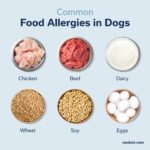The question of whether noodles are processed food is a complex one, often debated in nutrition and health circles. Let’s delve into the details, examining the processing levels of different types of noodles and their potential impact on health. This exploration will help you make informed dietary choices.
Researchers have explored the association between ultra-processed foods and adverse health outcomes. An umbrella review of 45 meta-analyses from 14 articles, encompassing nearly 10 million participants, revealed significant connections. These studies utilized food frequency questionnaires, dietary history, and 24-hour dietary recalls to gauge exposure to ultra-processed foods. The findings indicated a consistent link between high consumption of ultra-processed foods and an elevated risk of 32 negative health outcomes.
Defining Processed Foods
Before we can definitively answer “Are Noodles Processed Food?”, it’s crucial to understand what “processed food” actually means. Processing encompasses a wide range of techniques, from simple actions like freezing or drying to more complex industrial processes. The NOVA food classification system categorizes foods into four groups based on the extent and purpose of processing:
- Unprocessed or Minimally Processed Foods: These are foods in their natural state or have undergone minimal alterations, such as cleaning, drying, or pasteurization. Examples include fruits, vegetables, meat, and milk.
- Processed Culinary Ingredients: These are substances extracted from foods or nature, like oils, fats, sugar, and salt, used to prepare and season dishes.
- Processed Foods: These are made by adding salt, sugar, oil, or other substances to minimally processed foods. Examples include canned vegetables, cheese, and bread.
- Ultra-Processed Foods: These are industrial formulations made entirely or mostly from substances derived from foods and additives, with little or no whole foods. Examples include soft drinks, packaged snacks, and many ready-to-eat meals.
Noodles: A Spectrum of Processing
Noodles aren’t a monolithic entity; their processing levels vary greatly depending on ingredients and manufacturing methods.
- Fresh Noodles: Made from basic ingredients like flour, water, and sometimes eggs, fresh noodles generally undergo minimal processing. If made at home, they would fall under the category of “processed foods” due to the combination of ingredients. Commercially produced fresh noodles may contain additives for preservation or texture, potentially pushing them closer to the “ultra-processed” category, depending on the nature and quantity of these additives.
- Dried Noodles: Drying noodles extends their shelf life. The drying process itself is a form of processing, but the extent of processing depends on the ingredients. If the dried noodles contain only flour and water, they are considered minimally processed.
- Instant Noodles: Instant noodles are often considered ultra-processed. They undergo several industrial processes, including pre-cooking (often frying), drying, and packaging with flavor enhancers, preservatives, and other additives.
Health Implications of Ultra-Processed Noodles
Studies suggest a link between high consumption of ultra-processed foods and adverse health outcomes. The research indicated an association between ultra-processed foods and all causes of mortality, breast cancer, colorectal cancer, pancreatic cancer, adverse sleep outcomes, adverse anxiety outcomes, asthma, hypertension, Crohn’s disease, ulcerative colitis, obesity, metabolic syndrome, non-alcoholic fatty liver disease, and hyperglycemia, among other diseases and conditions. They also reported a 50% increased risk of deaths related to cardiovascular disease, a 12% higher risk of type 2 diabetes, and a 48% to 53% higher risk of anxiety and mental disorders. High intake of ultra-processed foods was also found to be associated with a 21% increased risk of death from any cause and a 22% increased risk of depression.
Making Informed Choices
So, “are noodles processed food?” Yes, but the degree of processing matters. Fresh or homemade noodles made with simple ingredients are a healthier choice than instant noodles loaded with additives. When choosing noodles, consider the ingredient list and opt for varieties with fewer additives and more whole food ingredients. Be mindful of portion sizes and balance your noodle dishes with plenty of vegetables and lean protein.
To mitigate the potential harms, consider the following:
- Read Labels Carefully: Pay attention to the ingredient list and nutritional information.
- Choose Whole Grain Options: Opt for noodles made with whole wheat or other whole grains for added fiber and nutrients.
- Limit Additives: Select noodles with minimal artificial flavors, colors, and preservatives.
- Prepare Meals at Home: Cooking your own noodle dishes allows you to control ingredients and portion sizes.
- Balance Your Diet: Ensure your meals include a variety of whole foods, such as fruits, vegetables, and lean protein.
The researchers argue their findings suggest that ultra-processed foods could be harmful to numerous body systems, highlighting the need for urgent action to reduce dietary exposure to ultra-processed foods. “Coupled with existing population-based strategies, we recommend urgent mechanistic research and the development and evaluation of comprehensive population based and public health strategies, including government led policy frameworks and dietary guidelines, aimed at targeting and reducing dietary exposure to ultra-processed foods for improved human health,” they wrote. Choosing less processed noodles and preparing them with fresh, whole ingredients is a step towards a healthier diet.
